
How does a girl-power manual would look in 1504? It only takes to browse “Lives of Famous Women” to find out.
In the very beginning of the 16th century, French Queen Anne of Brittany ordered educated Dominican monk Antoine Dufour to compose for her a series of biographies narrating the lives of important women.
Her order was materialized in the form of “Les vies des femmes célèbres“, an illuminated manuscript where the lives of 91 historical and mythical women, from Eve to Joan of Arc, are described and depicted in a book suitable for a true female leader.
It is not difficult to think of Anne seeking inspiration from great women of the past. In an era when the idea of Homo Universalis represented the ideal man, women followed suit. Many royals and aristocrats actively developed a taste for intellect, knowledge as well as beauty. They became patrons and inspiration of various artists, scholars, and explorers. Anne was contemporary to Spanish uber -Queen Isabella of Castille, Italian aristocrats Catherine Sforza , Isabella d’Este and Lucrezia Borgia and two generations behind Elizabeth I of England herself. Indeed, Anne was a strong competitor. She left back a legacy of ideal queenship, as one of France’s successful female rulers.
For the record, the manuscript still survives in the Dobree Museum, Nantes, France.
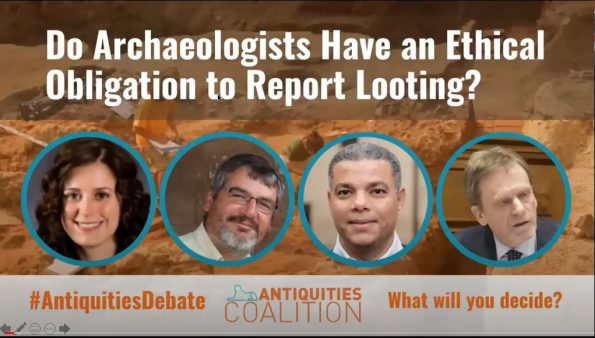
To report or not to report? A shocking majority of archaeologists had an experience connected to the looting of archaeological sites during their fieldwork career. Yet, while the vast majority of them proceed with taking action, the rest provide ethical and authority issues to justify their reluctance to doing “the right thing”. But how possible is actually doing so?
The above formed the subject of an impressive Live Debate by The Antiquities Coalition. The debate took place on April 29, 2020, and is now available on YouTube. The discussion’s moderator was Deborah Lehr (Antiquities Coalition Founder and Chair of the Board of Directors); the panel consisting of Prof. Blythe Balestrieri (archaeologist-criminologist), Prof. Luis Jaime Castillo (archaeologist, ex-Minister of Culture in Peru), Prof. Ramadan Badry Hussein (ex-Chief of Staff to the Ministry of Antiquities in Egypt, now Director of the Saqqara Saite Tombs Project) and Justice Luigi Marini (Italian High Court, an adviser to the Permanent Mission of Italy to the U.N. specializing in cultural heritage preservation).
The discussion was prompted by a research project by Prof. Balestrieri whose results were published in The Antiquity Coalition’s Policy Brief No. 6 (March 2020) under the title “Do Archaeologists Have an Ethical Obligation to Report Looting? Protecting Antiquities and an Ethical Double Standard”.
Research Data
Balestrieri’s research had been based on the results of an online survey and follow-up interviews. Since 2007, 2,400 archaeologists from around the world responded to the survey and follow up interviews reached the number of 662. Responses showed that 80% or archaeologists asked had a personal experience with looting (evidence on the site, approached or interacted with a looter, etc) on more than one occasion. But in the question regarding their’ reaction to the experience, the archaeologists’ answers varied from taking some action to not doing anything at all. The latter consist a whopping 24% of the participants.
According to Prof. Balestrieri’s research, many of the archaeologists who chose to remain inactive justified their position as sympathizing with the looters’ attempt to fight extreme poverty and hardship. Others stated the fear to alienate the local community and having trouble with working in the future, while, in other cases, remote looting events are part of the action of large criminal networks, and archaeologists choose not to intervene out of fear for their lives. The panel also raised the subject of distrust to the authorities; Prof. Hussein, discussed in length as he had faced it in his days as Chief of Staff to the Ministry of Antiquities.
The Debate
Can then such reasons be compelling enough to justify an archaeologists’ reluctance on taking action against looting happening in front of their eyes. And this, especially when archaeologists see themselves as stewards of cultural heritage?
When one could easily respond with a straight “No”, things might not be black and white but rather grey, as several of the online discussion’s expert panelists stated. In Lehr’s question on whether an archaeologist should be held criminally responsible if they do not report illegal archaeological activity, the panel answers “it depends”. Factors taken in the account include: particular details in the case witnessed, the state of the country the event is taking place, the social condition of the looters, etc.
The panel chose to prefer the grouping of archaeologists between local civil servants (to whom reporting is a legal obligation) and members of foreign missions (with no legal duty before the country hosting them) as key in justifying potential responses to the phenomenon. Finally, the panel discusses policies that would help to educate archaeologists on the looting matters faced in their country of research and local communities understand that they could profit more from protecting and promoting their antiquities rather than by contributing to their looting.
For the whole discussion and recommendations from the audience click here.
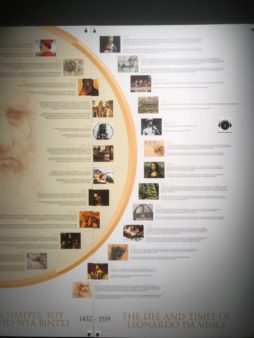
Leonardo Da Vinci: what the fuss is all about? This is the question which the spectacular exhibition “Leonardo Da Vinci: 500 years of genius“ aims to answer. But, does it do it? And is a possible answer to the above, enough to conceive what the ultimate Renaissance man was “made of” and why his life and times are that relevant today? I visited the exhibition as displayed in Athens, Greece, and here is what I got…
Three exhibitions on Leonardo in one
The show consists of three exhibitions in one. Indeed, I could distinguish between the first part dedicated to Leonardo’s inventions and art, another which focuses on a theory about the making of the Mona Lisa and a third one which aims to create a Da Vinci “experience” to the viewer, in a similar way it happened with “Van Gogh Alive” exhibition last year. I would better divide between a “tangible” and a “visual” section; the first consisting of replicas of the things he made or imagined, and the second, based on photos and video-projections.
Leonardo’ s Tangible Universe
Entering the hall, a timeline of Leonardo successfully places his activities into the history of his era. Then follow the replicas of the manuscripts where Da Vinci’s thought is recorded, surviving mostly as notebooks set into codices. Timeline and replicas are the only indicators of Leonardo’s historical context, at least for the tangible part of the exhibition. And then, true fun begins! Lifesize models of the machines he designed (flight, underwater action, war machines, theatrical productions, etc) fill the space. Functional models of systems he invented in order to place within machines are there for the audience to fiddle with. A famous Da Vinci optics experiment inspired my personal favorite; a fascinating installation of mirrors aligned along the interior walls of a polygonal cabin. Here you can enter and marvel at your endless reflections!
Posters of Leonardo’s surviving paintings, anatomical studies, and important sketches were also there enabling any visitor to familiarize with the Master’s major artworks. Still, this was not the exhibition’s best part. Latest paintings identified as Leonardo’s work (such as Salvator Mundi) are absent. The use of photos instead of true reproductions of the paintings (the lack of texture meant much of the technical data was not there), the absence of chronological information from the labels and the limited reference to the historical background of the paintings meant that the display pointed to answering “what” did Leonardo make, leaving aside the “why and how”, at least for the paintings. I make an exception for the presentation of Leonardo’s iconic Vitruvian Man; here, an interactive panel presents the characteristics, background, and meaning of the masterpiece. And the viewers can discover them all at their own pace.
Leonardo’ s World as Immersive Experience
It was then when I walked through the exhibition’s second section, which consists of two major projections.
The smaller one highlights on Leonardo Da Vinci’s masterpiece The Last Supper, and it follows the typical format of an explanatory video.
The larger one is an impressive spectacle developing in a number of mega-screens (along walls, the ceiling, and the floor) where the visitor “immerses” to Da Vinci’s world through a sequence of images relevant to the Italian Renaissance, the places he got active, his patrons and his work. Music accompanies all in a captivating manner while quotes of the Master himself and images complete one another. The whole gives a glimpse of Leonardo’ worldview in connection with his environment and work. And it includes the sets of info missing from the tangible exhibits
Impressive or plainly camp? It is impossible to say. True, however, it explains a lot on the background of what we have already seen. And one has to admit: it IS fun!
Mona Lisa’ s Secret Revealed
The third section is a photo exhibition presenting a controversial as well as interesting theory about the making of the Mona Lisa. Here, the visitor can see the iconic painting as developed; we discover how technology revealed that Lisa Gherardini and the Mona Lisa are, in fact, different from each other! Again, the focus here is on technical advances that allowed us to reach the surprising result; the whole may not be fully understood by every person in the room. And again, the analysis involves only the human figure on the painting and not the surrounding landscape, on which there is also a long bibliography attempting to solve the making of the masterpiece. Still, the very idea that the world’s most recognizable female face is, in reality, a kind of palimpsest and it does not represent a specific person, is enough to impress everyone, with or without a tech background.
The Verdict
The display is, overall, impressive! Observing the spectacular constructions, which certainly reflect Leonardo’s advanced sense of the world, one cannot help but marvel at the extent to which the ultimate Renaissance Man was able to observe and then decode the nature’s forces. Without a doubt, the exhibition shows Leonardo as an individual not only eager to understand the world but willing to make it a better place to live through practical solutions to both tangible and theoretical problems.
Even with its limited “faux- pas”, it remains faithful to its title which focuses on the man’s “genius”, purely devoted to practical knowledge at its best. True: Leonardo might have been many things but he was not -and never aspired to become- a “theory scholar”. His self-taught, creative mind could produce “how-to’ s” set in a non-defined time or space. The lack of historical background info in the exhibition might put a “Mona Lisa smile” on the face of the history geeks among us. Still, this exact type of display might actually reflect Leonardo’s take on the world: a bird’s eye view to an endless space for inspiration. And a visit was definitely worth it!
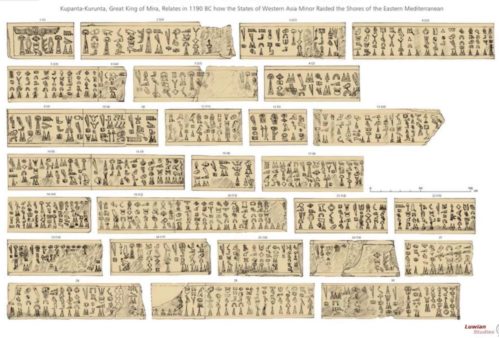
News about the rediscovery of a long-lost inscription in a long-lost language referring to a Trojan Prince circulates the internet since last week, and not without a reason.
Direct references to places known widely through both myth and archaeology (without these two essentially correlating), princes and wars, extinct languages and nations lost forever under the sands of time, all consist catchphrases for a community for whom archaeology as a discipline is always interlocked with the longing of bringing to life stories of glorious individuals and the series of unfortunate events that dramatically led to their demise.
Publicity, as a magnifying lens, gradually transformed the content of the news; in a couple of days the “3,200 – Year- old Stone Inscription tells of Trojan Prince, Sea People” was seen as “Luwian Hieroglyphic Inscription Explains the End of the Bronze Age”. Still, what is important in this piece of news is not related to Mediterranean History but the history of archaeological material management as well as heritage journalism.
The first to seek for is whether the inscription actually enlightens us on the end of the Bronze Age. The text actually tells the story of how two subsequent kings of a city-state called Mira had secured their control over the nearby city of Wilusa (Ilion aka Troy) by overthrowing and then reinstating its king in exchange for his loyalty. The text, dating in around 1190 BC. is important in mentioning two persons related to Troy; king Walmus and a Trojan prince called Muksus who led a victorious campaign against the coastal city of Ashkelon (in modern day Israel) and set a fortress there. The reference to Ashkelon is the only bit that connects the inscription with the Sea Peoples phenomenon.
Overall, the information given could be seen as a story which is important within the context of the period’s history but not as a key incident that “explains the end of the Bronze Age”.
Secondly, it is interesting to notice is how this piece of info came to us and who transmits it. In a closer look at one of the first (thus less bound to impress) news reports we see that:
a. The original inscription does not survive as the slabs, it was engraved on had been allegedly used for the building of a mosque short after the first copy had been completed.
b. The text reached the current researchers through a copy of a copy of the original; the first copy was allegedly made in 1878 and was recopied in some undefined date in the third quarter of the 20th century by a team of researchers who never published it. The inscription finally seems to somehow be included in the archive of Near Eastern archaeology expert James Mellaart.
c. The mid 20th c. experts names are nowhere to be found, while it is mentioned they died before 1985. James Mellaart also died in 2012. What makes things trickier is that Mellaart had been accused as one of Archaeology’s greatest fraudsters; he had been accused of faking finds at Çatalhöyük, while he was banned from exercising archaeology in Turkey due to a case involving the location of a treasure known as the Dorak affair (1965).
The result is that there is no evidence that the inscription which modern experts boast to have rediscovered is genuine as there is no reference to it that predates Mellaart. In what extent, then, we had to marvel at something that may have never existed? Possible for the dimension the story gives to the “publish or perish” saying. This is because, in our case, it was not only the team of experts that perished as they did not publish according to time but the credibility of their find as well.
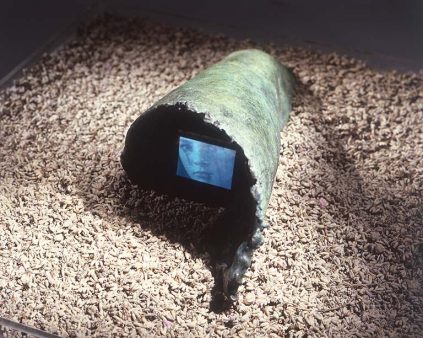
In Early Events (1996-2000), Liliane Lijn brings to Summerhall’s 2017 Festival five narrative sculptures, exhibited together for the first time in the UK, that form part of a series in which the artist examines her psyche. Like shards of brilliant glass, Lijn discovers early memories embedded within different parts of her body. Resembling archaeological finds, the five narrative sculptures embody Freud’s “fragments of memories” and they seem to have previously been burried, bearing the metaphor for psychoanalysis’ act of excavating one’s repressed past. In a recent interview (2017) with the curator of the exhibition, Gabriella Daris, Lijn stated about Early Events: “I am not simply using fragments of my body as containers for memory. These fragments transform in my imagination to become parts of structures, buildings, landscapes, enclosures and caves. They hide and protect my past but because they are parts of my body, that past is seamlessly connected to my future.” Using highly original combinations of industrial materials and processes, Lijn is recognised for pioneering the interaction of art, science and technology with works that stretch across a wide spectrum of interests. From her early Poem Machines (1962), kinetic word drums transforming written text into vibrations and influenced by her friendship with Beat poets Gregory Corso and William Burroughs, to Liquid Reflections (1967), works with light and water, and more recently, Stardust Ruins (2008), which use the immaterial aerogel. Her powerful feminist prose poem, Crossing Map, published by Thames and Hudson (1983) was followed by the series of interactive Cosmic Dramas. Liliane Lijn (1939) was born in New York, studied in Paris and lives in London. Internationally exhibited since the 1960’s, her works are held in numerous collections including Tate London, British Museum, V&A and FNAC in Paris. Lijn works across media – kinetic sculpture, film, text, performance and collage – to explore language, mythology and the relationship between light and matter. In 2005, Lijn was ACE NASA, Leonardo Network artist in residence at the Space Sciences Laboratory at UC, Berkeley. In 2013, she was shortlisted for the Fourth Plinth in Trafalgar Square. Recent exhibitions include Koans and Poems, a solo exhibition at One Canada Square, Canary Wharf (2017), As Above So Below, IMMA (2017), Beat Generation, Centre Pompidou (2016), City Sculpture Projects 1972, Henry Moore Institute (2016), RCM Galerie, Paris (2015), Images Moving Out Onto Space, Tate St Ives (2015), Ecstatic Alphabets/Heaps of Language, MOMA, New York (2012). The exhibition is accompanied by an illustrated catalogue with an essay by Gabriella Daris.
In conjunction with the exhibition, Liliane Lijn’s film Look A Doll! My Mother’s Story (1994-9) will be screened at Summerhall’s Anatomy Lecture Theatre on Saturday 16 September, at 14:00, followed by a Panel Discussion between Liliane Lijn and Monica Bohm-Duchen, moderated by Gabriella Daris.
More info here.
SUMMERHALL 1 Summerhall Edinburgh EH9 1PL
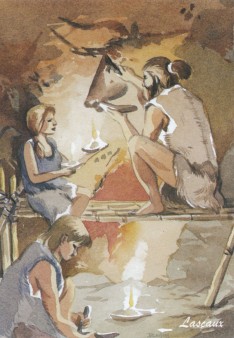
This image comes from a postcard released in France in relevance to the local (there) Lascaux cave archaeological site. From a first glance, there is just a beautiful and somehow naive picture of an imaginary past. But is it just that?
Not exactly. What caught my eye is that, contrary to the crude, “ape-like” posture adopted in mainstream depictions of prehistoric people, in this postcard, the people are “humanized”. The postcard’s artist has imagined the main cave painting creator as a tall slim man who retains his beard and long hair. After all, why couldn’t he be just like that? He is a Homo sapiens, just like us, not a Neanderthal or any other hominid. Secondly, the figures who help him are a young woman and a child, both equally slender and tame-looking. This is also a departure from what we normally see in “popular archaeology” representations of cave people, where gender roles are set in accordance to much later examples of ancient societies. Still, there is little evidence that cave artists were exclusively men and, more than that, that their helpers were also adult men. In that sense, this postcard’s artist has offered us an updated version of the way we see our distant forefathers.
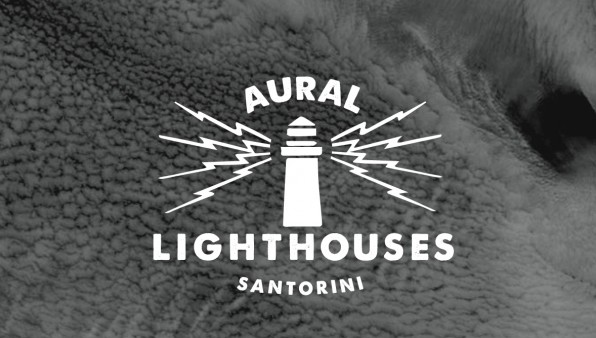
AURAL LIGHTHOUSES
The history of Santorini in relation to its active volcano and its inhabitants’ recent memory of the terrific earthquake of 1953 have created a particular cultural and environmental relationship between each body and its potentially violent ambience. Catastrophes are often identified with impetuous, dense and massive sounds. Continuing to use Santorini’s caldera as a ‘natural amphitheater’ for live or technically mediated auditory (re)presentations, the Santozeum museum will host the Aural Lighthouses symposium from May 18 – 23, 2015, and exhibition from May 18 – June 8, 2015, curated by Ileana Drinovan, as a part of the ‘PSi 2015: Fluid States – Performances of UnKnowing’ cluster of events across the world. Aural Lighthouses will examine the role of human aural performance in making disaster sounds seem natural and fade into a perceived inaudibility.
Aural Lighthouses Symposium & Exhibition at Santozeum Museum, in association with Performance Studies international presents,
DANCING TUBES INTERVENTIONS
by Gabriella Daris and Gustav Metzger
Dancing Tubes Interventions is a respiratory kinetic installation that bridges the conceptual ideas of two artists. It consists of Gustav Metzger’s Dancing Tubes (1968/2014) and two interventions by Gabriella Daris (2014/2015): (a) addition: live dancing within the installation and (b) reduction: the veiling of the sound source. Using Pythagoras’ acousmatic technique, Gabriella Daris focuses on the effect that the pressured air and its sound has upon the hyper-objects of the tubes and upon the dancer; a conflation of human and mechanized dance ensemble that raises enquiry in the audience as to both the sound source and its ontological register as well as its allusive echo. Manipulated by atmospheric pressure, her ethereal body is in constant strife to dance in harmony with the unpredicted frenetic dancing of two tubes that hang from the ceiling and are connected to an air compressor; set on a timer, it activates them for one-minute long with a ten-minute interval of silence and stillness. The sound score is here part of the repertoire recalling the violent force of the element of air, the art of respiration towards the inevitable death rattle and the system of autopoiesis. Dancing Tubes Interventions explores the poetics of liminal space and sound by dancing in-between.
Produced by Square Knot with kind support from Santozeum museum.
EVENTS
Symposium 18 MAY – 23 MAY 2015
Exhibition 18 MAY – 8 JUNE 2015
Dance Performance 19 MAY 2015 | 5-8 PM
Artist Talk 19 MAY 2015 | 8-9 PM
Laboratory 20 MAY 2015 | 7-10PM
On May 19th Gabriella Daris will dance live with the tubes over the course of three hours. This will be followed by an artist talk in which she will explore Gustav Metzger’s notion of Auto-Creative Art and Auto-Destructive Art, her dramaturgical approach to deconstructing his writings (1959-1999) as well as her ambiguous application of the Pythagorean Veil.
On May 20th Gabriella Daris will lead a laboratory inviting the audience not only to interact with the installation but to also experiment with different notions of seeing, hearing, and of hearing unseen sounds as they are made visible, challenging their psychophysical situation by means of exploring the implementation of destruction by the natural element of air to a level of fetishization and in reach of transcendence. Experimental artist Julian Hand will perform live light projections using watercolors on slides, creating a lava-like environment that recalls Gustav Metzger’s Liquid Crystal Environment (1965).
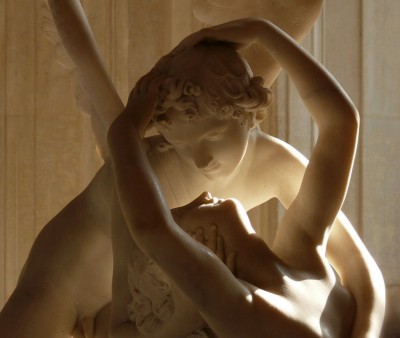
In the Michelangelo Gallery at the Louvre, the visitors crowd around this idyllic image of a loving couple: a winged man and a swooning woman in a voluptuous embrace, their lips about to join in a kiss. Who are these beings whom eighteenth-century sculptor Canova chose to immortalize in marble?
Watch this multimedia feature of the Louvre, to take a closer look at this masterful composition as you listen to the story of Psyche and admire Canova’s virtuoso treatment of the marble.

“Children transcribe ancient texts in citizen science project”.
This is the title of a recent news-item by “The Guardian” website referring to the “Ancient Lives Project”, a programme of recording and studying the thousands of inscriptions on papyrus found in Oxyrhynchus, Egypt. As stated in the text-and elaborated in the attached video- interested laypeople from the wider public can contribute to the Oxyrhynchus material study by measuring papyrus fragments as well as transcribing the inscriptions written on them. This is possible through logging in a web-platform named Zooniverse, where all the material is uploaded and accessible from each one of us, as well as we are logged in. The text also states that through the “Ancient Lives Project” “thousands of internet users, who have already helped to transcribe more texts than diligent scholars had managed in the previous 100 years”.
Still, the Ancient Lives Project is not the only programme where the wider public is involved in such an extent. In fact, it is one of a dozen of projects (related to physics, geography, the humanities) whose authorities have used Zooniverse not only to connect the wider public with their work but also to involve them in it. Most importantly, once a member in Zooniverse, each one of us can contribute to any of the projects uploaded in it. Such a possibility makes Zooniverse a true research-based Facebook!
It is too early to commend on whether such an involvement of the wider public in research can have a straight positive outcome. However, the idea of the Zooniverse creators as well as the scholars who chose to upload their material, taking research “out of the lab”, is truly pioneering and interesting!
You can also be a part of today’s research, for free, by signing up here.
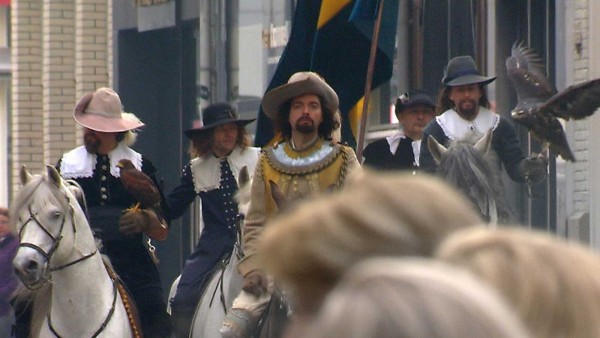
Rembrandt’s masterpiece the “Night Watch” returned to the Rijksmuseum, the home of the world’s largest collection of Rembrandt paintings, after a decade-long renovation process.
To mark the reopening the museum surprised visitors at a shopping centre in Breda with a flashmob recreating Rembrandt’s painting, titled “Onze helden zijn terug“, “Our heroes are back!”
The painting, completed in 1642, at the peak of the Dutch Golden Age, depicts the eponymous company moving out, led by Captain Frans Banning Cocq (dressed in black, with a red sash) and his lieutenant, Willem van Ruytenburch.
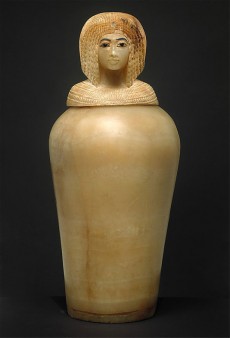
“This canopic jar was discovered in 1907 in this very mysterious little uniscribed tomb in the Valley of the Kings along with three others; because canopic jars com in sets of four (…) She’s just incredibly beautiful. She’s made out of this translucent stone and has this veining, this wonderful creamy, whitish-yellowish color. And then you get the beautiful shape with the high shoulder (… ) This beautiful canopic jar was meant to accompany a burial–and never to be seen again.”
Do not miss watching this fascinating episode of the web series “82nd&Fifth” by the Metropolitan Museum of Art, describing a beautiful canopic jar from the Valley of the Kings, its features and its mystery…
Description: Canopic jar with a lid in the Shape of a Royal Woman’s Head, ca. 1352-1336 BC. Travertine,blue glass, obsidian, unidentified stone. Reign of Akhenaten, Dynasty 18, New Kingdom, Amarna Period. Egypt, Upper Egypt; Thebes, Valley of the Kings, Tomb KV 55, Davis/Ayrton 1907.
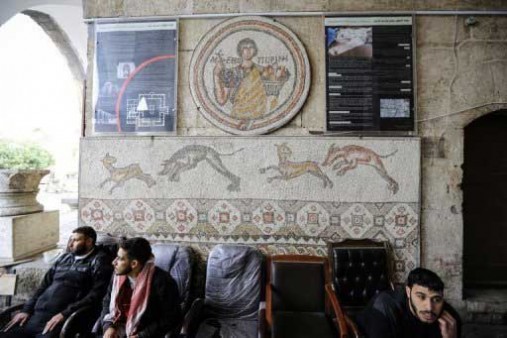
The mosaics reported to have been recently stolen from Syria may have been stolen last year, namely in March 2012, as they are already included in the INTERPOL database. Here some interesting information.
INTERPOL called “for vigilance on looting of ancient mosaics in Syria” on May 21st 2012. As David Meadows (rogueclassicis.com) points out none of the reports published last week about the stolen mosaics mention where or when these artefacts have been looted. He also refers to a Time magazine article, published last September, where it was suggested that antiquities were being sold to fund the rebels (“Syria’s Looted Past: How Ancient Artifacts Are Being Traded for Guns”). As Meadows writes: “That said, however, the clearly deliberate vagaries of the most recent announcement suggest that Syria’s ‘official’ channels are clearly playing up the looting aspect to gain political points in the Western media and as such, cause me to genuinely wonder who is doing the looting, the extent of it, and for what purposes. Indeed, in yesterday’s post we mentioned that many of the articles about this ‘Odyssey’ incident were accompanied by a photo of rebels sitting under a Roman mosaic”.
What is being implied?, Mr. Meadows wonders…
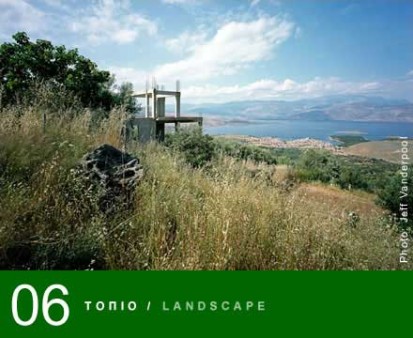
The new issue of MONUMENTA is online. It is dedicated to “Landscape” and features interesting articles written byKonstantinos Moraitis (Architect,Associate Professor School of Architecture NTUA), Giorgos Vavouranakis (Lecturer in “Prehistoric Aegean: Theoretical Archaeology”, National & Kapodistrian University of Athens), Christos Karagiannidis (anthropologist- museologist), Stelios Lekakis (archaeologist) etc.
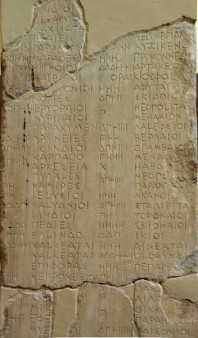
Attic Inscriptions Online (AIO) is a website designed to make available the inscriptions of ancient Athens and Attica in English translation.
It is being launched with translations of the 281 inscribed laws and decrees of Athens, 352/1-322/1 BC, which have recently been edited by Stephen Lambert as IG II3 1, 292-572.
So far there are only a handful inscriptions, in English translation only, without the original texts, but as mentioned on the site, the functionality of the site will be enhanced (e.g. by refining the search function), and eventually the site is to be extended to include all the inscriptions of Attica (ca. 20,000 in total).
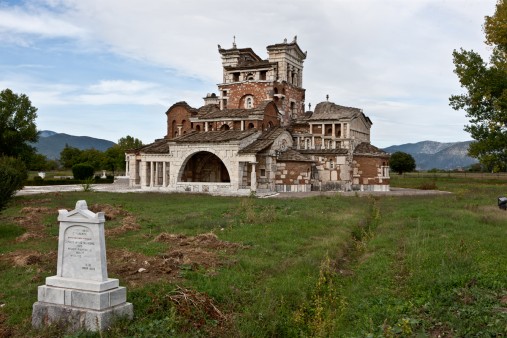
Obviously something you cannot define!
Imagine if you could determine the taste, how strange it would be to put it into a form and to standardize it…
Tastes! Someone can do it, the quiz is, he can succeed?
I found some quotes on the subject of taste that I loved…
“Good Taste is the consciousness of beauty but beauty is nothing but the consciousness of good taste”
Joseph De Maistre, 1753-1821
“Good taste is better than bad taste, but bad taste is better than no taste at all”
Arnold Bennett, English poet, 1867-1931
“There is nothing more fearful than imagination without taste.”
Johann Wolfgang von Goethe, 1749-1832
“Bad taste creates many more millionaires than good taste.”
Charles Bukowski, 1920-1994
“What is exhilarating in bad taste is the aristocratic pleasure of giving offense.”
Charles Baudelaire, 1821-1867
“Good taste is the worst vice ever invented.”
Edith Sitwell , 1887-1964
Once I was had a query… Exceptional artists and I don’t refer to some gallery-made artists, but to considerate and exceptional photographers and not only (nevertheless on that sector I have indulged more) they have done a gorgeous and balanced art but on their daily routine actually you can’t find any taste. How can one have standards and education that is needed to achieve that result in art while the daily routine is incompatible with the artistic expression?
I took an answer but it doesn’t satisfy me… Still seeking…
I wrote that post by occasion of the photos that I post on photo gallery.
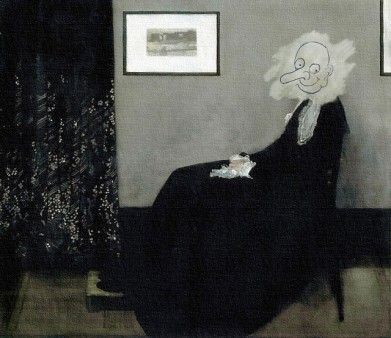
We read this article about amateur conservation methods, written by Emily Sharpe, in The Art Newspaper:
“News of a grandmother’s botched restoration of a 19th-century fresco in a small church in Borja, Spain, spread through the art world like wildfire this summer. Bloggers took to their computers asking how this could have happened and what the chances are of it happening again elsewhere. Although the likelihood of a well-meaning member of the public walking into a prominent museum like London’s National Gallery, paintbrush in hand, ready to set to work on a Titian, is slim, what about works in small private collections that remain largely out of the public eye but may one day end up in a museum or national archive? Unfortunately, these pieces are all too often subjected to misguided interventions.
“Amateur restorations have always been a problem,” says Joyce Hill Stoner, a paintings conservator and professor at the Winterthur/University of Delaware Program in Art Conservation, who has lectured on the danger of do-it-yourself restorations for more than 30 years. Before the incident in Spain, Stoner had assumed that the phenomenon was more American than European. “In the US, you buy a Reader’s Digest so you can fix your plumbing or your gutters, so why not also try to fix your paintings?” According to Stoner, a newspaper column that was popular in the 1960s and 70s advised readers on how to bleach their prints. “It was as if our profession was something that could be learned in 20 minutes,” she says.
Winterthur offers a free, monthly conservation clinic where the public can bring in works of art and get expert advice. Some of the things Stoner has seen are shocking, from a collector trying to age a frame by leaving it on the roof of his car in a rainstorm to using household cleaning products on paintings. “A geology professor tried to remove a layer of grime from a beautiful 19th-century landscape with Ajax. He scrubbed away a tree in the process,” Stoner says. “People say that they’re trying to treat their paintings and I tell them that’s like telling a doctor that they’re in the middle of taking out their own appendix,” she says.
Several years ago, Stoner met a couple who let a friend, an artist, “feed” their paintings, including a Velázquez, while they were on holiday. This involved coating the painting with linseed oil—an ill-advised practice as the oil will darken and crack over time and is difficult to remove without taking off the original paint. “People do not understand the difference between an artist’s training and that of a conservator. Becoming a mother is different from becoming a paediatrician. Artists are the parents, we are the paediatricians,” she says.
Stoner thinks the decision to do-it-yourself is often motivated by money, as collectors often “blanch” when she estimates the cost. “It’s better not to touch the work than to do something unwise,” she warns.
It’s not only paintings that get the do-it-yourself treatment. Mark Browne, a conservator at the British Library, often comes across photographs stuck with self-adhesive tape, which can leach into the paper. He also has to deal with over-zealous stamp collectors who bleach envelopes—a practice that darkens and weakens the paper’s structure.
Browne feels that most collectors mean well, and that the real issue is access to cheap materials. “People had the best intentions when they put their photographs in those magnetic albums that were popular in the 1980s and 90s. They didn’t realise that the plastic would degrade the photos,” he says.
One positive outcome of the incident in Spain is heightened awareness. “In some ways, we were heartbroken, but on the other hand, it has resulted in a tremendous boost in advocacy for our profession,” Stoner says.”
Photo from the film “Bean: The Ultimate Disaster Movie”, presenting Bean’s attempt to patch up the lacquer thinner accident, which disssolved the face of “Whistler’s Mother” from the painting.
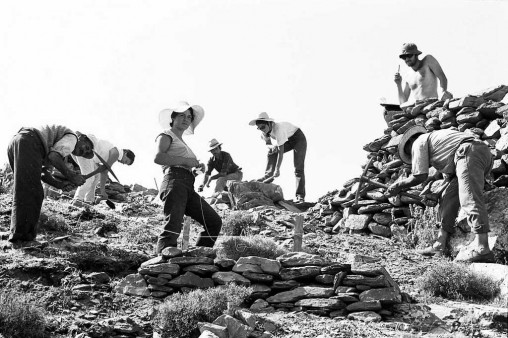
Between 1967 and 1977 an Australian team excavated at the site of Zagora on the Cycladic island of Andros under a permit issued to the Archaeological Society at Athens. During that time a number of Zagora Heritage Films were made on 16mm stock. Two and half minutes of footage has been edited together to give you an idea of what it was like to be at Zagora in the sixties.
You can view the video on the Institute’s Youtube channel by clicking on this link
http://www.youtube.com/watch?v=wxh-jYdYCGY&feature=youtu.be
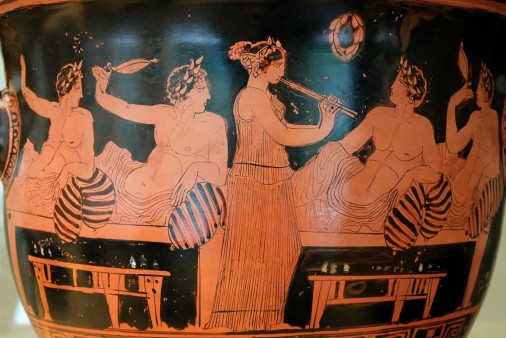
The Sydney Friends of the Australian Archaeological Institue at Athens & The Friends of the Nicholson Museum organize a special event. On October 15 the Sydney Friends of the Institute will be hosting with the Nicholson Museum an exclusive ancient Greek food night at the Museum. “Hatted” Chef David Tsirekas will take guests on a culinary journey through the ancient world with five tasting plates matched with unique Greek wines.
Speakers on the night will include Dr Ted Robinson, who will talk about the influence of Greek food in the ancient world and Michael Turner, who will speak about the god Dionysos. Lastly, Angie Giannakodakis will talk about “The Rise and Rise of Greek Wines Today”. Members will remember Angie as the sommelier of George Calombaris’ restaurant “The Press Club” in Melbourne. Angie is taking time out from her new restaurant “Epocha” in Carlton Gardens in Melbourne to speak to us in Sydney!
$100 per person
For bookings call 9351 4759 or email [email protected]
For more information: http://aaiasydney.tumblr.com/post/30963423806/amazing-food-and-wine-event-at-the-nicholson
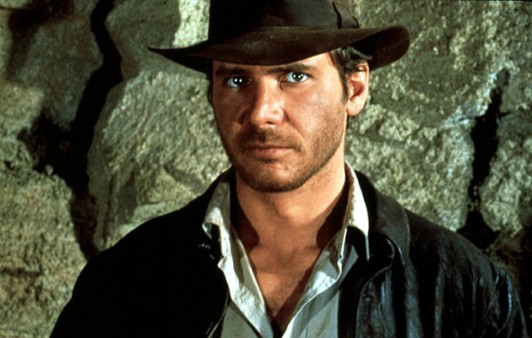
Having stood the test of time, “Indiana Jones atnd the Raiders of the Lost Ark” is perhaps the greatest action/adventure films of all time. Through this blogpost we decided to celebrate by digging out some fun facts about the Spielberg classic. Feel free to drop into conversation oto impress your pals.
Fact 1: Indiana’s original surname was originally meant to be Smith, but was changed to Jones during the first day of production when Spielberg realised it “didn’t sound right”. Thank god.
Fact 2: A few actors considered for the role of Indy included Jack Nicholson, Chevy Chase, Steve Martin, Nick Nolte and Bill Murray, with Tom Selleck being Spielberg’s official second choice. Harrison Ford was only cast a few weeks prior to principle photography beginning. Jeff Bridges also turned down the role.
Fact 3: ‘Raiders’ was Alfred Molina’s big screen debut, where he was unforgettably covered in tarantulas on his first day of shooting. Initially the spiders didn’t move because they were all male. A female tarantula had to be added to make them crawl towards her.
Fact 4: The famous giant boulder was actually made from fibreglass. After spending ages pushing big rocks down a hill trying to get the right sound, designer Ben Burtt noticed while on the way home that the noise of his Honda Civic station wagon driving down a gravel embankment was perfect. He placed his equipment near the wheels and began recording.
Fact 5: Most of the body blows we hear during the film’s fight sequences were created by smacking a baseball bat into a pile of leather jackets.
Fact 6: Whilst filming in Tunisia pretty much the entire cast and crew got dysentery after sampling the local cuisine. Director Spielberg escaped the illness because he only ate tins of self-bought Spaghetti-O’s.
Fact 7: In December 1999, Indy’s famous bull whip was sold for £27,600 at Christie’s Auction House in London. His hat and jacket remain on display at the Smithsonian.
Fact 8: During a scene where Indy threatens a group of Nazis with a bazooka, a fly flew into the mouth of unfortunate actor Paul Freeman. Refusing to break character, he promptly swallowed the fly and continued the take. What a pro.
Fact 9: The scene where Jones fires upon a truck was in fact a botched stunt. The truck was meant to be flipped by a telegraph pole via explosives that lined the floor, but it wasn’t powerful enough and made the vehicle tip on an angle, which can be seen in the final cut of the movie. It was not amended as there was no time to reshoot.
Fact 10: Most of the snakes in the Well of Souls weren’t actually snakes at all, but legless lizards. They are identified by their visible ear holes which snakes don’t have. The scene was a nightmare to film as the creatures weren’t actually afraid of fire and actually they tried to get closer to the flames to warm themselves (rather than flee as required).
By Mike Williams via Yahoo, 20/09/2012
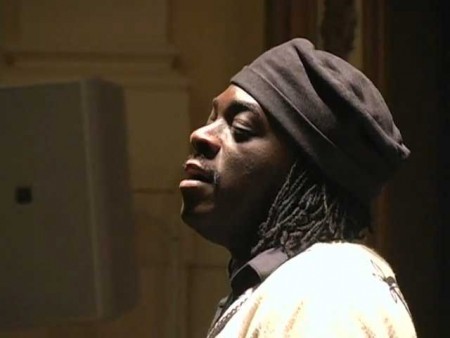
At The University of Chicago Magazine we read: “For Mark Eleveld and Ron Maruszak, the realization was inescapable: Homer, the blind bard, ancient Greece’s greatest poet, whose epics on the Trojan War and its aftermath founded the Western canon and influenced 3,000 years of literature, was, basically, a slam poet. What else to call a man—a showman and writer—who made his living turning poetry into entertainment, who traveled from town to town performing memorized verses before crowds of listeners? “I imagine that if Homer was alive today, and he had to go hang with a crew, he’s either going to the playwrights or to the performance poets,” says Eleveld. “In my head, it’s the performance poets. They take a hit in academic circles, but they’re closer to Homer than people realize.”
That’s the argument running through a documentary by Eleveld and Maruszak, Poets and Profs: Looking at the “Iliad,” in which ivory tower luminaries like Robert Pinsky and Nicholas Rudall, Herman Sinaiko, AB’47, PhD’61 (who died in October 2011), and James Redfield, U-High’50, AB’54, PhD’61, share the screen with leading lights from the slam poetry world: Taylor Mali, Bob Holman, Regie Gibson, Marc Smith. West Point English professor Elizabeth Samet provides some of the film’s most stirring moments, discussing the Iliad’s lessons—literary, military, and moral—for future soldiers.”
A trailer for the film:
http://www.youtube.com/watch?v=C_p9_rs-Cl4
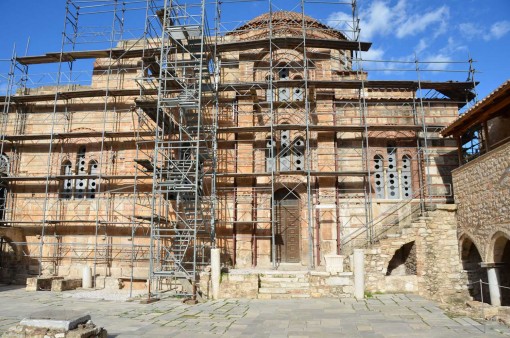
On Sunday, October 21, 2012, at 11:30 am, MONUMENTA, George Amyras and OIKO.POLI.S. Haidari – Friends of Nature, run for monuments promoting safe and sustainable urban mobility, co-organizing the 5th Cultural Bicycle Ride tracing the Sacred Way (Hierá Hodós).
Meeting point will be Kerameikos Square, at the conjunction of Ermou and Pireos streets, opposite “Gazi”. Route will follow Hierá Hodós up to the Daphni Monastery, where participants will have the chance to visit one of the most important Byzantine monuments of Greece.
For more information: http://monumenta.org/
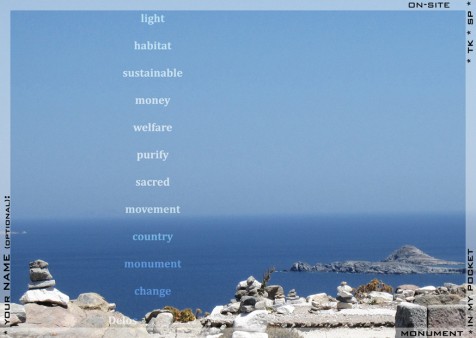
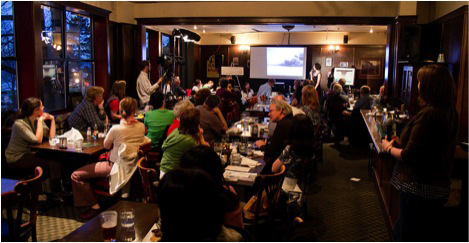
What are science cafés? Well, they are “live events that take place in casual settings, such as pubs and coffeehouses, are open to everyone, and feature an engaging conversation with a scientist about a particular topic”. They exist all over the world, varying from place to place. It is like a movement. Anyone can start a science café. Which means that one doesn’t have to be a scientist to organize one. It doesn’t take great effort or a big budget. Quite the contrary, as a science café is meant to have an intimate café atmosphere, which distinguishes it from large scale events and crowded lecture halls. For more information, visit the site http://www.sciencecafes.org/.
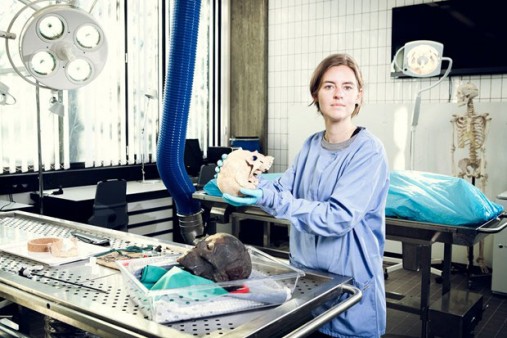
In an interview given by the archaeological geneticist Christina Warinner to the Guardian, we read that it’s a good thing our ancestors didn’t floss their teeth! For archaeologists, at least. Calculus or plaque is continually in contact with the mouth and the digestive and respiratory tracts. The plaque contains the remains of many bacterial species that inhabited the mouth and nasal passages, as well as immunological proteins associated with inflammation and infection. It’s like a time capsule. The amount of DNA is astounding. The geneticist finds 1,000 times more DNA by weight in fossilised calculus than in bone.
Each sample contains hundreds of millions of DNA fragments, which come from 2,000 to 4,000 species of bacteria. By sequencing the DNA and looking for the parts that overlap the scientists can gradually map the genes that pathogens use to attack our cells and evade our immune system. That should allow them to investigate the long-term evolutionary history of human health and disease, right down to the genetic code of individual pathogens, and it should allow them to reconstruct a detailed picture of the dynamic interplay between diet, infection and immunity that occurred thousands of years ago.
Plaque can also tell us what sorts of plants were being consumed at the time. Many of the genetisists’ samples date from Germany in the medieval period when Arab traders were beginning to introduce new grains and fruits to Europe.
References: http://www.guardian.co.uk/technology/2012/jul/29/christina-warinner-archaeology-genetics-calculus, http://www.wired.co.uk/magazine/archive/2012/06/start/evolutions-dental-detective